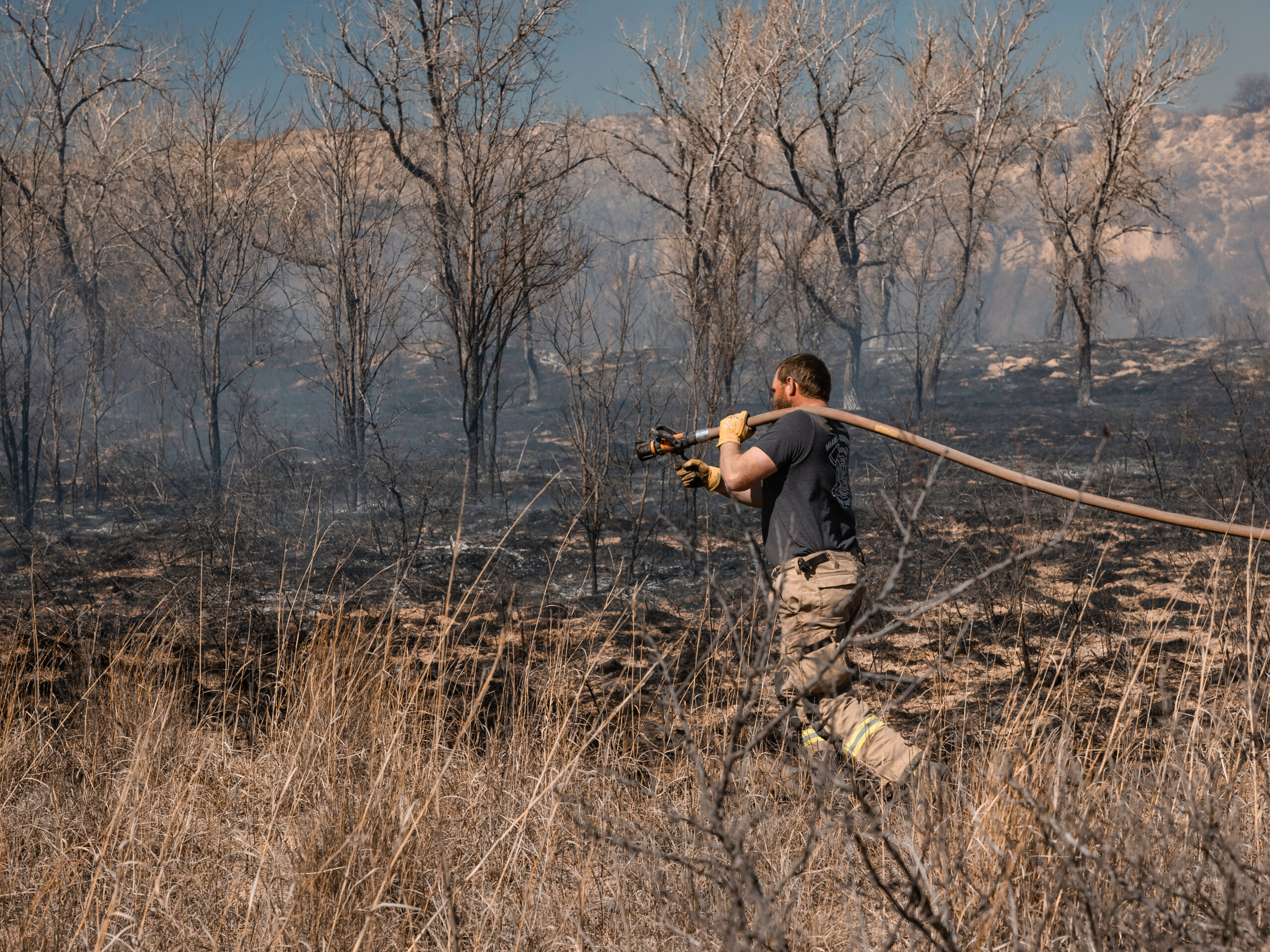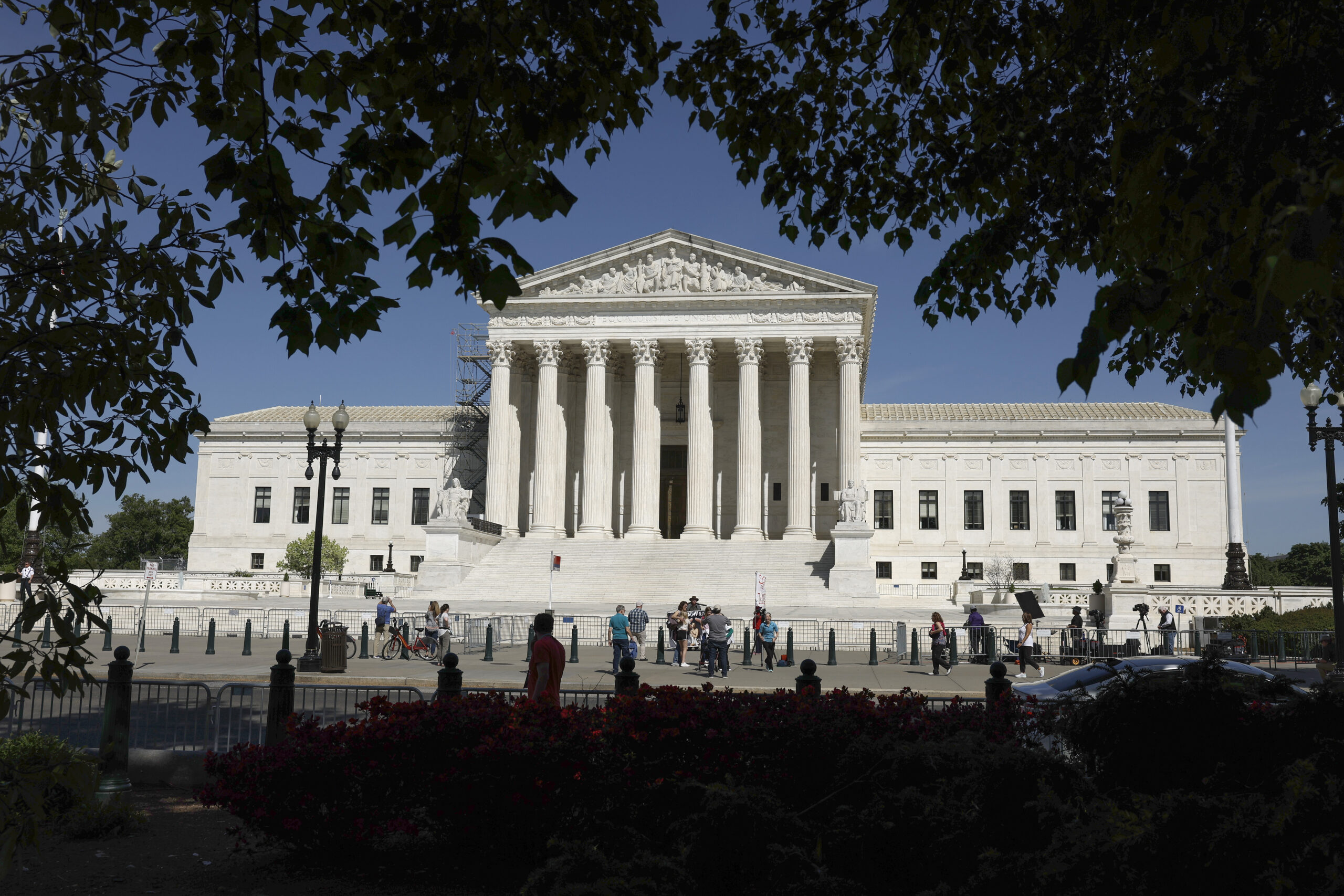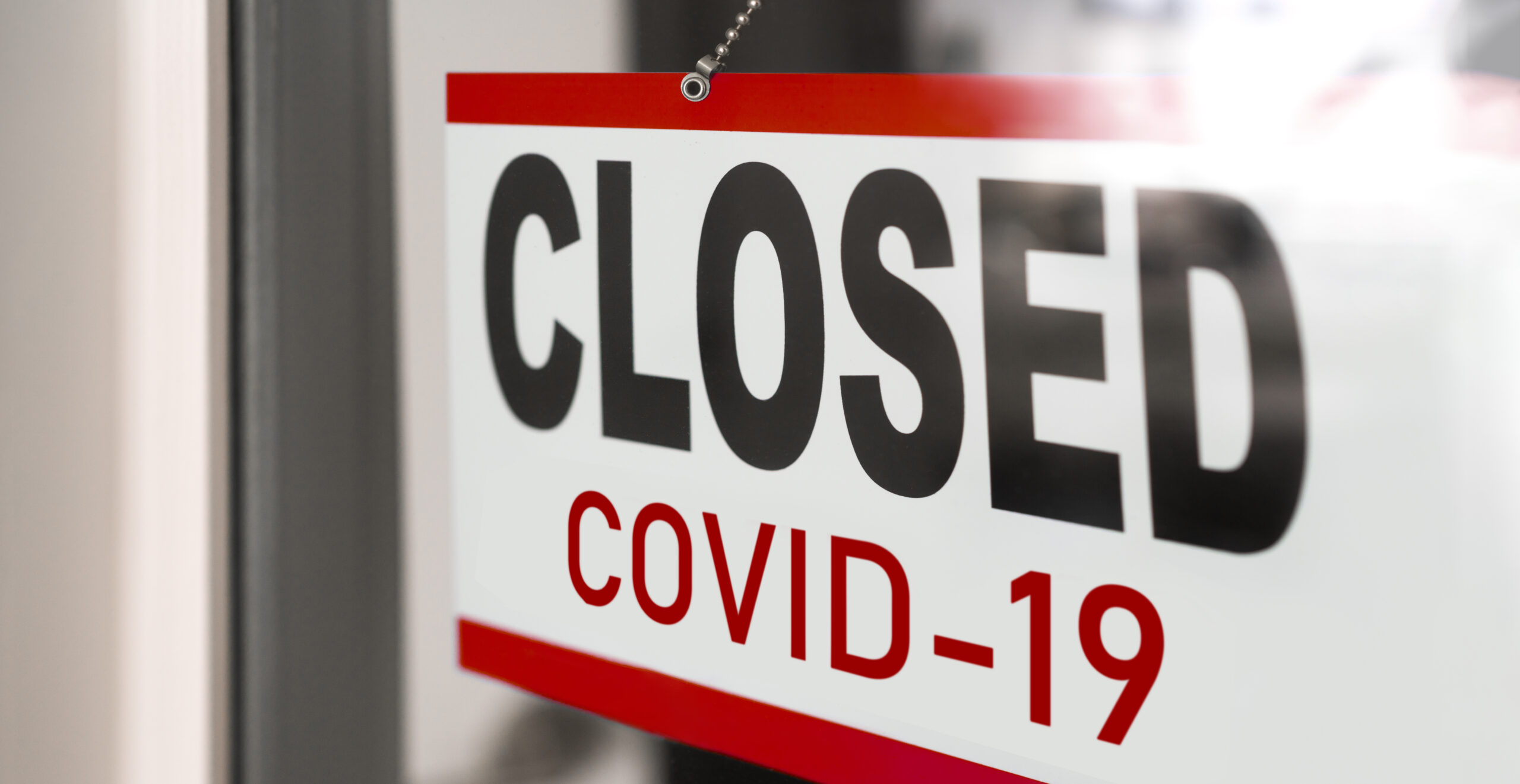Société
combien y a-t-il de morts pour la France sur les monuments de nos communes ?


Le site memorialgenweb.org recense toutes les informations sur les soldats morts pour la France. Grâce à ce travail, bénévole, de fourmi, voici une carte interactive qui permet de visualiser le nombre de morts dans les communes de votre département.
Cliquez sur votre département, puis sur la commune de votre choix. Vous y trouverez le nombre de morts recensés dans la localité ainsi qu’un lien permettant de consulter les noms des victimes.
Cliquez ici pour accéder à la carte
Attention, certains relevés par commune sont partiels, tandis qu’un même soldat a pu être inscrit sur plusieurs monuments aux morts, faussant parfois toute tentative de comptabilité.
Société
Slide Names Powell Sales VP; Garner Moves to Alliant SE

Tampa-based Slide Insurance has named former Farmers Insurance vice president Charles “Chas” Powell to be senior vice president of sales.

Powell has more than 20 years in the industry and began his career at his family’s insurance agency in Florida. He later was underwriter and territory sales manager at Unitrin Kemper and, most recently, was VP of independent agency distribution with Farmers/Foremost, Slide said in a news release.
Like Slide, which has touted its technology-based approach to property insurance, Powell brings a data-driven approach to the role, the company said. Slide said it now has more than 249,000 policyholders.
Alliant Insurance Services, a national distributor of insurance services, said John Garner has joined the team as a producer in its employee benefits group, based in Atlanta.
Garner was previously a benefits consultant at OneDigital and is licensed to sell health, life and accident insurance. He has worked for Kaiser Permanente and as a police officer, nurse and business owner, the California-headquartered Alliant said in a press release. He will now work with clients in the Southeast.
Topics
Alliant
Was this article valuable?
Here are more articles you may enjoy.
The most important insurance news,in your inbox every business day.
Get the insurance industry’s trusted newsletter
Related
Société
Uncertainty Keeps Prices Up; No Prior-Year Loss Development: Travelers

With its personal lines business benefiting from the impact of rate increases earning into the book, and the commercial lines insurance premium changes staying in double-digits, Travelers reported $1.1 billion in net income for the first quarter.
Still, it was a blank line on the financial report for the quarter that captured the attention of some investment analysts during an earnings conference call—indicating neither an overall boost or takedown to loss reserves for prior years in Travelers largest business segment, Business Insurance.
While earned pricing in the second largest segment—Personal Lines—and higher investment income overall were key drivers of jumps in income and return on equity, analysts focused more questions on possible obstacles to continued success in Business Insurance. They worried not just about the need for higher loss reserves but also about the possibility of aggressive competitor pricing behavior.

“What we would speculate is that everybody’s reacting to the same things that we’re reacting to,” Travelers Chair and Chief Executive Officer Alan Schnitzer told an analyst who reacted to the news that Business Insurance has recorded renewal rate changes of 7 percent for four straight quarters, and renewal premium changes above 10 percent with a question: Why haven’t competitors become more aggressive on price?
“Returns are in a much better place after years of pricing and improvements in terms and conditions. But there are some headwinds and some uncertainty out there,” said Schnitzer. “It’s all the things we’ve talked about [before]. There’s social inflation, economic inflation, a tight labor market, weather. Geopolitics, I think, puts a certain lens over the way we all see the world. And so I suspect what you have is a marketplace that’s reacting to an overall level of risk and uncertainty,” he said.
As for loss reserves, Chief Financial Officer Dan Frey reported there was no net prior-year reserve change in Business Insurance because favorable development in the workers compensation line of nearly $100 million “was largely offset by modest increases for liability coverages in recent accident years along with modest charges in our runoff book.”
Which accident years?
Analysts delivered that question and worried aloud that the troubles prompting industrywide boosts in liability loss reserves for accident years 2015-2019 late last year are bleeding into more recent prior years. “Everyone had thought these were better priced years relative to 19 and prior,” one analyst said, asking why there is now adverse development on other years at Travelers.
Related articles: Time-Tested Loss Reserving Methods Challenged: AM Best ; Worst Is Over: Most of Casualty Reserve Hole May Be Filled, Analyst Says; What Industry Executives Are Saying About Loss Reserves, Social Inflation
“I’ll avoid the temptation of splitting what is a small number to begin with into its individual accident years. We’re not going to do that,” Frey said.
“We’re talking about some pretty small movements here….What we’re doing here is trying to be reactive to all the information we’re seeing. Those recent accident years in the liability line which tend to take longer to develop and tend to be on the books for a while are more leveraged to IBNR. We’re just trying to get some more IBNR into those lines to recognize that uncertainty.
Schnitzer added that there’s no new news to report. “There’s not any significant new developments here. These are generally the same trends we have been talking about for a long time—a little more of the same,” he said, reiterating Frey’s comments that the adjustments are very small.
Overall Results
Overall, the after-tax net income figure of $1.1 billion that Travelers reported was roughly 15 percent higher than last year’s first-quarter result of $975, but Schnitzer also highlighted a 45 percent jump in pretax core income, noting that prior-year financial results contained a one-time tax benefit of $211 million. (Editor’s Note: Core income also excludes realized gains—$27 million after tax in 2024 and $5 million in 2023)
“Strong core income was driven by record net earned premiums of 10.1 billion, up 14 percent compared to the prior-year period and an excellent combined ratio of 93.9,” Schnitzer said.
Contributing to the bottom-line income figure, pretax underwriting income jumped 57 percent to $577 million and net investment income grew 28 percent to $846 million.
Even though nearly $0.5 billion of catastrophe losses impacted the Personal Lines segment, adding 12.4 points to the segment combined ratio of 96.9, Personal Lines had the biggest improvement in underwriting income of the three reporting segments for Travelers. The $176 million difference between the first-quarter 2024 $99 million underwriting gain and to a $77 million underwriting loss recorded in first-quarter 2023 for Personal Lines, represented more than 80 percent of the pretax underwriting income improvement (of $210 million) for the company overall.
“The earned effect of pricing is far and away the biggest driver of the improvement in the quarter and there’s more of that to come going forward,” said Personal Lines President Michael Klein, during the Q&A section of the earnings conference call. Klein was clarifying an insight he offered during prepared remarks, noting that the first quarter is historically the quarter with the lowest underlying (ex-cat, ex-prior-year development) combined ratio quarter for personal lines.
With respect to personal lines, executives also noted these impacts on results:
- Renewal premium (rate and exposure) changes in the quarter averaged 16.6 percent for personal auto and 13.4 percent for homeowners
- There were 19 PCS designated events for the industry, more than 50 percent above the long-term average.
- Vehicle severity trends moderated in the quarter.
“The underlying combined ratio of 86.1 reflects a 6.8 point improvement compared to the prior year quarter, driven by higher earned pricing in both automobile and homeowners,” Klein reported, referring to the combined ratio excluding catastrophe loss and prior-year reserve development impacts. The reported combined ratio, including those impacts, improved 4.6 points to 96.9, down from 101.5 in first-quarter 2023.
Both the Personal Lines and Bond & Specialty segments of Travelers reported favorable prior-year loss reserve development—shaving 1.6 points off the Personal Lines combined ratio, and 2.5 points off the Bond & Specialty.
Travelers smallest segment, Bond & Specialty, was the only one to report lower segment income and a higher combined ratio for first-quarter 2024 compared to the same period in 2023. Executives attributed this to a lower amount of favorable prior-year reserve development (2.5 point of the combined ratio this year vs. 6.7 point in 2023). Executives also talked about the expense ratio impact of the acquisition of cyber MGU Corvus, which closed in early January, noting that this resulted in a full quarter of expenses on Travelers books but little earned premiums.
Topics
Trends
Profit Loss
Pricing Trends
Société
United Airlines Says Boeing to Compensate for Damages Caused by MAX 9 Grounding


United Airlines will receive compensation from planemaker Boeing for financial damages incurred in the first quarter due to the grounding of 737 MAX 9 aircraft, the carrier said on Wednesday.
U.S. regulators had in January grounded some Boeing 737 MAX 9 aircraft for about three weeks for safety checks after a cabin panel blowout on an Alaska Airlines-operated MAX 9 jet.
The incident had forced United Airlines — a prominent Boeing BA.N customer — to temporarily suspend service on all 79 of its 737 MAX 9 aircraft, which resulted in a $200 million hit for the airline in the first quarter.
United Airlines said in a filing on Wednesday that a confidential agreement with Boeing will provide it with “credit memos” for future purchases to make up for the grounding damages and the rescheduling of deliveries.
A credit memo is an official written acknowledgement that money is owed back to a customer.
As of Feb. 5, 78 of the 79 737 MAX 9 aircraft operated by United Airlines had returned to service after receiving a final approval from the Federal Aviation Administration.
In response to a request for comment on Wednesday, Boeing pointed to its CFO Brian West’s remarks at a conference in March.
West had then said “customer consideration is going to manifest itself in the quarter (after the grounding), in the P&L and we’ve got to take care of that.”
Alaska Air had said earlier in April that Boeing paid about $160 million to the airline in the first quarter as initial compensation to address the hit from the grounding.
The mid-air panel blowout has undermined the reputation of Boeing, which has undergone a management shakeup and seen U.S. regulators put curbs on its production while its deliveries fell by half in March.
(Reporting by Granth Vanaik in Bengaluru; Editing by Shilpi Majumdar)
Photo: RENTON, WA Boeing 737 MAX airplanes are seen parked on Boeing property near Boeing Field on August 13, 2019 in Seattle, Washington. (Photo by David Ryder/Getty Images)
Topics
Aviation
Aerospace
Was this article valuable?
Here are more articles you may enjoy.
Interested in Aerospace?
Get automatic alerts for this topic.
Related
Société
Wildfires Are Upending Some of the Safest Bets on Wall Street

When the Texas Panhandle went up in flames this winter, the news spread fast on Wall Street. An electric utility by the name of Xcel Energy Inc. was getting blamed for the massive blaze — a lawsuit pointed the finger at its dilapidated equipment — and this was making the company’s investors very nervous.
Throughout the morning of Feb. 29, investors unloaded shares. By early that afternoon, the stock was down nearly 10%. Bond prices were sinking too, triggering a spike in Xcel’s yields. For money managers who had long treated the utility’s bonds as an uber-safe asset — something almost akin to a US Treasury note — the rout, while brief, was jarring.
It sent the latest in a series of warnings on climate change to an investing community that’s plowed some $1.7 trillion into the stocks and bonds of power companies that trade on Wall Street. For years, these assets have been seen as safe bets for retirement and insurance funds for a simple reason: Selling electricity is about as steady, and crucial, an industry as there is. These businesses are regulated monopolies and, the thinking has gone, too important too fail.
But as climate change exacerbates droughts and wildfires, and utilities often take the blame for starting them, their assets are increasingly at risk. Few industries in America will be more directly impacted by fires — both physically and financially — than the power sector, experts say.
Already the financial pain is piling up. Over the past eight months, investors have driven down the value of Hawaiian Electric stock by 73% after the company was blamed for the deadly Maui blaze. Its bond due in 2045 is trading at 62 cents on the dollar. A few years earlier, shares of PG&E Corp. plunged after it caused wildfires in California that would eventually force it to declare bankruptcy. And fires have stuck PacifiCorp with such heavy losses that its parent company Berkshire Hathaway said it could wipe out all of its energy division’s profits. Warren Buffett, Berkshire’s chairman, admitted he made a “costly mistake” in not anticipating the surge in these expenses.
“Investors realize this is a big problem, but they don’t know how big of a problem it is for a particular utility,” says Michael Wara, a wildfire expert and director of the climate and energy policy program at Stanford University. They’re essentially “flying blind,” he says. “A bad September afternoon wildfire can cause the stock to fall by 80% or as a bond investor, you could land as an unsecured creditor in a bankruptcy proceeding.”

The losses have, so far at least, been more acute and lasted longer on the stocks side than the bond side. This makes a certain amount of sense. While soaring costs may erase profits — the lifeblood of any thriving stock — the too-important-to-fail element to these utilities means that in many cases state governments will prop them up enough to allow them to keep paying their debts. Still, to Andy DeVries, an analyst for CreditSights Inc., investors are shrugging off the “hidden risk” that wildfires and litigation pose to their portfolios.
“This risk is not a one-time thing,” says DeVries, who has covered debt markets for more than two decades. “It’s not a cyclical thing. It’s here to stay, and it’s going to get worse.”
Wildfires have been breaking out more frequently and burning more and longer as the climate changes — with blazes seen from the US west to Canada, Siberia and the Australian bush.

Read More: Big Texas Blaze Shows Power-Line Fires Are Widespread Threat
The Smokehouse Creek Fire erupted in northern Texas in late February. Over the course of almost three weeks, it charred more than one million acres and even spread into western Oklahoma. The blaze destroyed power lines, homes and cars and killed thousands of livestock animals and two people.
“These investors are looking to sleep at night — and now, all of sudden, they are waking up to wildfires,” says DeVries.
Xcel was promptly sued before investigators had officially determined the cause. In an unusually swift determination, a state probe found that a broken wooden pole owned by Xcel toppled in high winds and started the blaze. Kevin Coss, a representative for Xcel, says the company has and will continue to enhance its fire-risk mitigation efforts.
“We have already advanced a number of wildfire risk reduction initiatives,” Coss says. “Like all energy companies, we are navigating changes in weather and climate-induced impacts on our operations.”
Many utilities are being forced to borrow more in corporate debt markets, straining their finances, to upgrade aging infrastructure and pay off claims. This has pushed sales of utility bonds up at a faster clip than those in other blue-chip industries, according to data compiled by Bloomberg.
Buffett’s PacifiCorp sold $3.8 billion of investment-grade bonds this year to, in part, help fund settlement claims related to fires that broke out in Oregon. Edison International’s Southern California Edison — which agreed in February to pay $80 million to resolve a lawsuit related to blazes in 2017 — issued $3.6 billion of bonds in the past six months, according to data compiled by Bloomberg.
Even Xcel sold an $800 million note in February, only to see its yield over US Treasuries quickly balloon to a peak of 1.62 percentage points, from 1.25 points when it was issued. It’s the type of blowout in so-called risk premiums typically seen in riskier junk debt — not an investment-grade utility bond.
“You want to be very careful,” says Arvind Narayanan, co-head of investment-grade credit at Vanguard Group.

About a quarter of credit-rating downgrades in the industry over the past five years have been related to extreme weather events, according to Fitch Ratings. Xcel lost its A- credit rating when S&P Global Ratings cut the company to just three steps from junk. Its outlook remains negative, implying that further downgrades are possible.
“When we talk to the rating agencies and investors, they are right up front asking: ‘What does your wildfire mitigation plan look like?”‘ says Randy Howard, general manager of the Northern California Power Agency, which represents several locally-owned utilities. “It’s one of the first questions they ask today.”
Credit scores are crucially important to utilities, one of the most capital intensive industries in the US, says Emily Fisher, the general counsel for the Edison Electric Institute, the main industry group for investor-owned utilities. That’s because investment-grade companies can typically raise cash more cheaply in corporate debt markets than those with riskier scores.
Hence the effort by utilities to inform federal lawmakers about the issue and lobby for reforms at the state level. Utah, for example, has adopted legislation that caps utility wildfire liabilities, while California set up a wildfire insurance fund meant to backstop utilities involved in catastrophic blazes. That, a cap on shareholder utility liabilities and other regulatory reforms helped stabilize the finances of the state’s utilities after PG&E and Edison were blamed for multi-billion-dollar fires.
PG&E was recently upgraded by all three major credit assessors, leaving the company’s credit score just one notch below investment grade, says Jonathan Arnold, vice president of investor relations for PG&E. The protection afforded by the wildfire fund has allowed PG&E to make billions of dollars of investment in fortifying its grid against blazes, Arnold adds.
“Constant access to affordable capital, which is essential for a healthy utility and to keep customer rates low, is threatened by unchecked wildfire litigation,” says Tiffany Erickson, communications director at PacifiCorp. A spokesperson for Edison International also pointed to recent credit upgrades, which came alongside fire-risk reduction efforts and the state fire insurance fund. Hawaiian Electric declined to comment.
Recent fires have been “a wakeup call” to Portland General Electric Co.’s Chief Financial Officer Joe Trpik. In a 133-page wildfire mitigation plan, his company laid out projects that aim to minimize risk that the utility would ever be responsible for future wildfires. The company’s projected operating and maintenance costs for 2024 is more than $815 million.
The trick, for Trpik and other power executives, is financing for these projects while still transitioning toward greener energy — and without cranking up customer bills too much and fanning inflation.
“Here in Oregon, we are seeing, feeling and experiencing the impacts of climate change,” he says. “It’s a challenge. It’s not something anyone should take lightly.”
Read More: Portland General Electric Eyes Bonds for Wildfire Prevention

Stanford’s Wara says investors should do their due-diligence and press utilities about the precautions they’ve taken to reduce wildfire risk. Climate experts consistently warn that extreme weather events are going to happen more frequently and at higher intensities, and wildfires are notoriously challenging to predict.
“You’re always looking over your shoulder when something happens,” says Mike Sanders, head of fixed income at Madison Investments, which manages $25 billion. “There is enough to worry about in the investing world other than a fire in Texas.”
Copyright 2024 Bloomberg.
Topics
California
Catastrophe
Natural Disasters
Texas
Wildfire
Société
Montana Asbestos Victims Want Buffett’s Railroad Company Held Responsible

An attorney for two people who died of a rare lung cancer argued this week for a jury to hold BNSF Railway responsible for pollution in a small Montana town near the U.S.-Canada border where thousands of people were exposed to toxic asbestos dust.
The railroad — now owned by Warren Buffett’s Berkshire Hathaway Inc. — hauled asbestos-tainted vermiculite from a nearby mine through Libby, Montana, over decades. How much BNSF knew about the health hazard from those shipments is it at the center of a weekslong civil trial that began Monday.
Attorneys for the railroad said it was told repeatedly that the product it was shipping through Libby was safe.
The U.S. Environmental Protection Agency in 2009 declared the first-ever public health emergency during a Superfund cleanup in Libby. It’s one of the deadliest sites under the federal pollution program.
The W.R. Grace & Co. mine that operated most of last century on a mountaintop outside Libby produced contaminated vermiculite that health officials say has sickened more than 3,000 people and led to several hundred deaths.
The pollution has been largely cleaned up. Yet the long latency period of asbestos diseases has meant people have continued getting sick with lung problems.
The estates of Thomas Wells of LaConner, Oregon, and Joyce Walder of Westminster, California, filed a wrongful death lawsuit against BNSF in 2021. They argue the railroad and its corporate predecessors stored asbestos-laden vermiculite in a large rail yard in Libby — before shipping it to plants across the U.S. where it was heated to expand for use as insulation in millions of homes and businesses.
Plaintiffs’ attorney Mark Lanier said the dangers of asbestos were well known by the industry yet BNSF never took steps to warn the people of Libby. He added that W.R. Grace, the mining company, started putting warning signs on its vermiculite rail cars as early as 1977.
The trial, Lanier said, was about “did (the railroad) expose Libby residents to wind-born asbestos contamination.”
BNSF attorney Chad Knight said the railroad was required under law to accept the vermiculite for shipment and had been told by W.R. Grace that it was safe. The onus was on the shipper to tell the railroad if it was hazardous, Knight said.
Numerous other lawsuits alleging BNSF exposed Libby residents to asbestos are pending, court records show.
The Walder and Wells lawsuit is the first so-called community exposure case against BNSF to go to trial, almost 25 years after federal authorities arrived in Libby following news reports about widespread deaths and illnesses.
People who lived and worked in Libby breathed in the microscopic needle-shaped asbestos fibers that can cause lung scarring and the lung cancer mesothelioma, the lawsuit argues.
Wells, 65, died in March 2020, a day after giving a 1/2-hour recorded deposition for the lawsuit. He talked about his exposure during seasonal work for the U.S. Forest Service in the Libby area in late 1970s and early 1980s.
Wells said he was diagnosed with mesothelioma in late 2019 after feeling an ache in his back and developing a serious cough. He said the pain was intolerable and that he had to sell his house to help cover medical bills.
Walder 66, died in October 2020. She lived in Libby for at least 20 years and could have been exposed to asbestos while fishing and floating on a river that flowed past a spot where vermiculite was loaded onto train cars, according to court records. Her exposure may have also come from playing around a baseball field near the rail yard or walking along the railroad tracks and occasionally heating up pieces of vermiculite to watch it puff up, the records said.
The trial, presided over by U.S. District Court Judge Brian Morris, is expected to last three weeks.
BNSF said in court documents filed in advance of the trial that when low levels of asbestos were found in the Libby rail yard during testing in 2001, the railroad cleaned up the site to protect its employees.
But an expert for the plaintiffs said BNSF and its predecessors sponsored geologic reports in the area and knew as early as the 1920s that the vermiculite mined near Libby had asbestos. By the 1930s the railroad would have known asbestos exposure could be hazardous, based on research disseminated at the time through the Association of American Railroads, said plaintiffs’ expert Julie Hart, who chairs the Department of Safety, Health and Industrial Hygiene at Montana Technological University.
Late Sunday night, the railroad requested a last-minute delay in the trial and a change of venue to a different state, citing a weekend story by The Associated Press about the trial and asbestos contamination in Libby. Attorneys for the railroad said prospective jurors would be prejudiced by the article, which quoted a 61-year-old Libby resident who has an asbestos-related disease as saying he used to play in and around the rail yard.
Morris instead allowed the trial to proceed after telling attorneys not to talk to the news media while it’s ongoing.
Another case against BNSF Railway alleging community — rather than work-related — exposure to asbestos is scheduled to go to trial next month in U.S. District Court in Missoula. It was brought by the estate of Mary Diana Moe, 79, who died of mesothelioma in December 2022.
Copyright 2024 Associated Press. All rights reserved. This material may not be published, broadcast, rewritten or redistributed.
Société
Supreme Court Makes It Easier to Sue for Job Discrimination

The US Supreme Court made it easier for employees to sue over discriminatory job transfers, siding with a St. Louis police officer who says she was shifted to a different role against her will because she is female.
The justices unanimously ruled Wednesday that people suing under the main federal job-bias law don’t have to show a transfer caused them a significant disadvantage. Writing for the court, Justice Elena Kagan said Congress required only that employees show some sort of harm, even if it’s not a major one.
“To demand ‘significance’ is to add words — and significant words, as it were — to the statute Congress enacted,” Kagan wrote.
Federal appeals courts had been divided on the issue, with some requiring workers to show a job transfer had a significant impact beyond the discrimination itself.
The officer, Jatonya Clayborn Muldrow, was a sergeant who worked in the St. Louis Police Department’s intelligence division on public-corruption and human-trafficking cases from 2008 to 2017. She said she was transferred without warning out of the intelligence division and replaced with a man.
Muldrow’s pay remained the same in her new position in the department’s Fifth District. But she says she had to start working weekends, was given more routine assignments like patrolling and lost much of her access to high-profile people within and outside the department.
Alito and Kavanaugh
A federal appeals court threw out her lawsuit against the city, saying she hadn’t shown enough of an adverse impact on her job conditions.
Kagan said Muldrow’s allegations met the law’s injury requirements “with room to spare,” kicking the case back to the lower courts to consider other issues.
Although the outcome was unanimous, Justices Clarence Thomas, Samuel Alito and Brett Kavanaugh declined to join Kagan’s reasoning.
Alito called the opinion “unhelpful,” saying he didn’t understand how plaintiffs could be required to show harm but not that the impact was significant.
“I have no idea what this means, and I can just imagine how this guidance will be greeted by lower court judges,” he wrote.
Kavanaugh said the court should have gone further and not required any showing of harm at all.
Kagan pointed to lawsuits by a person who had been forced to work in a wind tunnel, another worker who had been moved to a night shift and a third employee whose new job meant supervising fewer people. In each case, a federal appeals court said the harm wasn’t significant enough to allow a lawsuit.
Those examples “illustrate how claims that failed under a significance standard should now succeed,” Kagan wrote.
The Biden administration backed Muldrow in the case, while business groups backed the city.
The case is Muldrow v. City of St. Louis, 22-193.
Photo: The US Supreme Court in Washington, DC.
Copyright 2024 Bloomberg.
Topics
Lawsuits
Talent
Société
Coal Miners Getting New Protections Against Black Lung Disease

Coal miners will be better protected from poisonous silica dust that has contributed to the premature deaths of thousands of mine workers from a respiratory ailment commonly known as black lung disease, the Labor Department said Tuesday as it issued a new federal rule on miners’ safety.
The final rule, announced by Acting Labor Secretary Julie Su, cuts by half the permissible exposure limit for crystalline silica for an eight-hour shift.
Mine workers, community advocates and elected officials from Appalachian states have pushed for the stricter rule, noting that health problems have grown in recent years as miners dig through more layers of rock to gain access to coal seams when deposits closer to the surface have long been tapped. The increased drilling generates deadly silica dust and has caused severe forms of pneumoconiosis, better known as black lung disease, even among younger miners, some in their 30s and 40s.
“It is unconscionable that our nation’s miners have worked without adequate protection from silica dust despite it being a known health hazard for decades,” Su said Tuesday. “Today, we’re making it clear that no job should be a death sentence, and every worker has the right to come home healthy and safe at the end of the day.”
In Central Appalachia, an estimated one in five tenured coal miners has black lung disease. The condition reduces life expectancy by an average of 12 years and makes it a “struggle to get through a phone call or play with their grandkids without losing their breath,” Su said in a speech in Uniontown, Pennsylvania, where she appeared with Cecil Roberts, president of the United Mine Workers of America, and other union leaders.
“For too long, we accepted this as just the way things are for people who work in mines,” Su said. “They’ve had to work without the same protections from silica dust that people in other industries have, even though we’ve known about the harms of silica dust since Frances Perkins,” who was labor secretary in the 1930s and 1940s.
Pro-Worker
The election-year rule shows “what it looks like to have the most pro-worker, pro-union president in history,” Su said, a political comment referring to Democratic President Joe Biden.
Rebecca Shelton, director of policy at the Appalachian Citizens Law Center, which pressed for stricter rules to protect miners, said the group was reviewing the rule to ensure regulators from the Mine Safety and Health Administration accounted for comments by health professionals, attorneys and miners who have worked on the rule for years.
“There are too many lives at stake to get this wrong, and we’ll do whatever we can to ensure that this rule provides the protection that miners deserve,” Shelton said.
Democratic senators from Ohio, West Virginia, Pennsylvania and Virginia hailed the new rule, saying it will be essential in safeguarding miners.
Mining Association
A spokesman for the National Mining Association said the group was reviewing the rule but supports the lower limits. The mining lobby has pushed to allow use of administrative controls and personal protective equipment to meet safety standards. “Unfortunately, those recommendations were not included in the final rule,” said spokesman Conor Bernstein.
Vonda Robinson, whose husband, John, was diagnosed with black lung a decade ago at age 47, said she’s felt hopeful as officials considered the rule changes. But she was skeptical how the rule will be enforced.
Robinson, who lives in rural Nickelsville, Virginia, near the Tennessee line, said the mine safety office does not have enough staff or resources to adequately protect workers and their families.
“You can have rules, but until you back it up with enforcement, it’s not going to mean anything,” she said in an interview. “If they’re going to put out these rulings, you need to hire more people.”
The White House requested a $50 million increase to the mine safety office’s budget for the current year, most of which would have been for more inspectors and enforcement. Congress rejected it, keeping the budget at the 2023 level of $388 million.
Vonda Robinson said her husband struggles every day. John Robinson worked in the mines for almost three decades. Two years ago, the couple met with a physician about a lung transplant.
“Until you see it and live with it, you don’t understand,” Vonda Robinson said. “And knowing what we’re looking at now — miners being diagnosed at 32 – they’ll probably never see their children graduate or have grandchildren.”
Corrective Actions
The Labor Department rule lowers the permissible exposure limit of respirable crystalline silica to 50 micrograms per cubic meter of air for a full-shift exposure, calculated as an 8-hour average. If a miner’s exposure exceeds the limit, mine operators must take immediate corrective actions.
The rule is in line with exposure levels imposed by the Occupational Safety and Health Administration on construction and other non-mining industries. And it’s the standard the Centers for Disease Control and Prevention was recommending as far back as 1974.
The Labor Department began studying silica and its impact on workers’ health nearly a century ago, but the focus on stopping exposure in the workplace largely bypassed coal miners. Instead, regulations centered on coal dust, a separate hazard created by crushing or pulverizing coal rock that also contributes to black lung.
In the decades since, silica dust has become a major problem as Appalachian miners cut through layers of sandstone to reach less accessible coal seams in mountaintop mines where coal closer to the surface has long been tapped. Silica dust is 20 times more toxic than coal dust and causes severe forms of black lung disease after even a few years of exposure.
Willingham reported from Charleston, West Virginia.
Copyright 2024 Associated Press. All rights reserved. This material may not be published, broadcast, rewritten or redistributed.
Topics
Virginia
Société
North Carolina Adjuster and Son Charged With Embezzlement in Roof Jobs


A North Carolina mother and son adjusting and contracting team are scheduled to appear in court next month on charges of scamming more than $20,600. Both have been charged with similar offenses in the last two years, the state Insurance Commissioner said.
Terrance Antoine Hunter, 40, of Huntersville, and his mom, Tracie Michelle Famber, 59, of Charlotte, were charged with the theft after investigators from the state Department of Insurance began looking into the alleged actions. Hunter, a roofing contractor, had pledged to make repairs to a home if the homeowner signed a contract with Famber, a public adjuster, a DOI spokesman explained.
Further details on how the alleged crime went down, or if the insurance carrier may have paid on the claim, were not available. An investigator for American Modern Home Insurance Co. was listed as a witness on the arrest warrants.
The offense occurred in February 2023 and the two turned themselves in April 4 in Charlotte. Hunter and Famber were charged last fall with running a similar scam in other counties and taking more than $47,100, the DOI said.
National Association of Insurance Commissioner records show that Famber held a public adjuster’s license in North Carolina until it expired last month.
Causey’s office also said that Charles Earl Holden, 38, of Wilson County, was charged with insurance fraud in an auto claim with Integon National Insurance.
Holden reportedly told his insurance company that he had hit some wildlife on the road. Investigators later found that the damage had actually come in early 2023, during a hit-and-run incident that resulted in a fatality to a human. Further details were not provided.
Topics
Talent
North Carolina
Interested in Talent?
Get automatic alerts for this topic.
Related
Société
NC Governor’s Pandemic Rules for Bar Closures Were ‘Illogical’ Court Says

RALEIGH, N.C. (AP) — North Carolina Gov. Roy Cooper’s orders during the COVID-19 pandemic that directed standalone bars to remain shuttered for safety while restaurants that serve alcohol got to reopen were “illogical” and violated the state constitution, an appeals court ruled Tuesday.
A state Court of Appeals panel declared unanimously that a trial judge erred when he rejected claims by the North Carolina Bar and Tavern Association and private bars that their constitutional rights to earn a living and for equal treatment were violated with the Democratic governor’s executive orders.
It was “arbitrary and capricious” to allow some restaurants with bars to reopen with limited capacity while the plaintiffs’ bars weren’t allowed to reopen in the same way, Court of Appeals Judge April Wood wrote in the panel’s opinion vacating parts of Superior Court Judge James Gale’s decision. The association and bars in the lawsuit were subjected to unequal treatment that was “illogical and not rationally related” to the governor’s stated goal of slowing the virus’ spread, Wood said.
A series of orders issued by Cooper starting in March 2020 closed all bars, including those in restaurants. Within a few months, bars had to remain closed, but restaurants and breweries could serve alcohol during certain hours. That’s when the association and over 185 entities that owned or operated private bars sued.

Cooper’s May 2020 order stated that bars presented “greater risks of the spread of COVID-19” in part because the business model has people “remaining in a confined indoor space over a sustained period.” But the bar owners said they were equally capable of complying with reduced capacity, social distancing and other restrictions.
At the time of the orders, Cooper said the decision to keep bars closed was based on “data and science” and “daily briefings from doctors and healthcare experts,” according to the opinion.
Cooper’s state attorneys provided some news articles, a scientific study and another executive order to support the governor’s decisions in restricting bar operations, but according to Wood they “fail to address any differences in the risk of spread of COVID-19 between the bars he allowed to reopen and Plaintiffs’ bars which remained closed.” Court of Appeals Judges Donna Stroud and Jefferson Griffin joined in her opinion that found two constitutional violations. The judges are registered Republicans.
Later in 2020, bars could serve alcoholic drinks in outdoor seating, with time limits later added. All temporary restrictions on bars were lifted in May 2021.
Cooper spokesperson Mary Scott Winstead defended the state’s response to COVID-19 early in the pandemic, saying it consulted with health officials, complied with the law and saved lives and jobs.
“When this action was taken almost four years ago, hospitals were overflowing, thousands of people were dying, protective equipment was in short supply and vaccines and treatments were nonexistent,” Winstead said in an email. She didn’t respond to a question about whether Cooper would ask the state Supreme Court to formally review the ruling.
The association celebrated the ruling, which if upheld would return the case to trial court to decide what monetary damages, if any, the state owes the bar owners.
“We never asked for special treatment, only equal treatment,” association President Zack Medford said in a news release. “The governor’s decision forced many of these bars to eventually close permanently. Today’s ruling makes it clear that the governor was wrong and now the state needs to make it right.”
Cooper was the subject of several lawsuits challenging his COVID-19 actions early in the pandemic. The governor was largely successful in court, with judges often affirming his emergency powers. Recently, however, appeals courts have favored plaintiffs.
Last September, Wood wrote the majority opinion in another case saying that similar litigation filed by several bars and their owners could go to trial. The state Supreme Court also heard arguments in November over whether a lawsuit could continue against the state’s health secretary by the owners of a racetrack shuttered temporarily because it wasn’t complying with gathering limits set by Cooper in 2020. The justices have yet to rule in the Ace Speedway case.
Copyright 2024 Associated Press. All rights reserved. This material may not be published, broadcast, rewritten or redistributed.
Topics
North Carolina
COVID-19
Société
Attorney Wants Footage of Fatal Chase in Mississippi But Town Says None Exists

JACKSON, Miss. (AP) — Civil rights attorney Ben Crump demanded Tuesday that police in a small town in Mississippi release camera footage of a chase that ended in the death of a Black teenager, but the city attorney said the police department does not use cameras.
“I have been advised by the Chief that the police vehicles in Leland are not equipped with dash board cameras nor were the police officers equipped with body cams,” Josh Bogen said in an email to The Associated Press.
The AP filed a public records request March 29 seeking documents about the fatal encounter that occurred in the early hours of March 21, including incident reports, body camera footage and dashcam footage of the police chase of 17-year-old Kadarius Smith and his cousin.
Smith and his cousin were out walking when a Leland Police Department vehicle chased them and ran over Smith, said his mother, Kaychia Calvert. Smith died hours later at a hospital.
Bogen said Tuesday that the district attorney has not yet released a police incident report about the chase.
Leland is in the flatlands of cotton and soybean country and has a population of about 3,900. It is about 110 miles (177 kilometers) northwest of Mississippi’s capital city of Jackson.
Smith’s family has retained Crump. They are demanding that the officer who drove the vehicle be fired and that unedited police camera footage be released.
During a news conference Tuesday in Leland that was livestreamed on Instagram, Crump mentioned Black people killed by police in high-profile cases in the U.S. during the past few years, including George Floyd in Minneapolis and Tyre Nichols in Memphis, Tennessee. Crump also led people in the chant: “Justice for Kadarius!”
He called on the police chief, the mayor, the city attorney and others in Leland to “do their job” and release camera footage and other documents in the case.
“If this was their child, what would they do?” Crump said. “Exactly what they would do for their child, we want them to do it for Ms. Calvert’s child and Mr. Smith’s child.”
Patrick Smith said he will never have a chance to see his son walk across the stage next year at high school graduation.
“I will never have a grandchild, because he was the last Smith,” his father said. “They took that.”
Bogen said officers were responding to a call about an assault in progress. He could not confirm if Smith was a suspect.
Bogen said police told him that at least one responding officer involved was Black, and that it was an accident that the police vehicle struck Smith.
In a March 27 interview with the AP, Calvert said her son’s cousin told her that he “heard a loud boom” and then saw the police SUV leaning like it was about to flip. She said he told her that the SUV landed on its wheels, ending up on Smith’s body.
Calvert described her son as “a loving, caring person” who was smart, independent and outgoing. He was in 11th grade and played on the Leland High School basketball team.
Copyright 2024 Associated Press. All rights reserved. This material may not be published, broadcast, rewritten or redistributed.
Topics
Mississippi



















